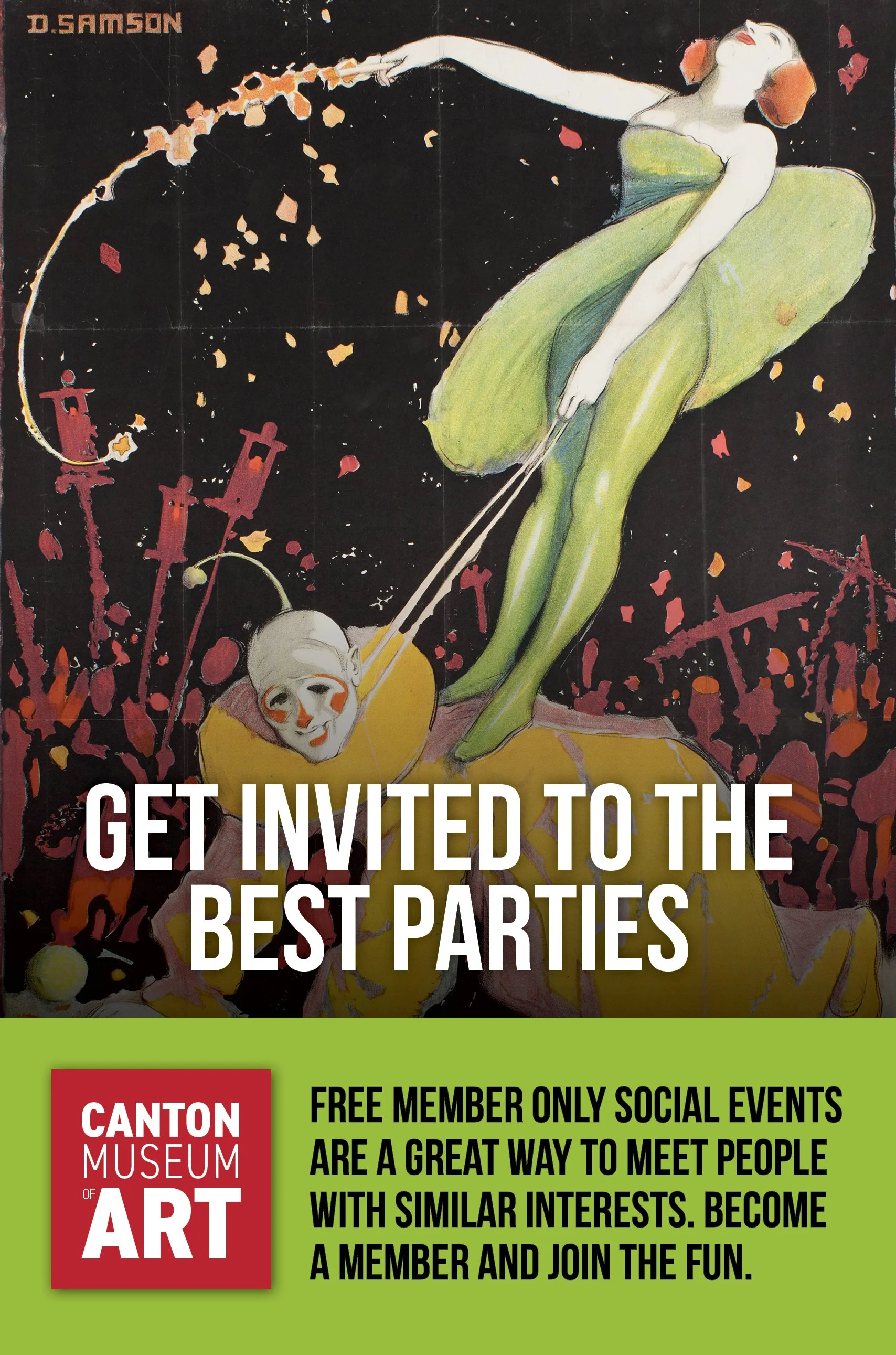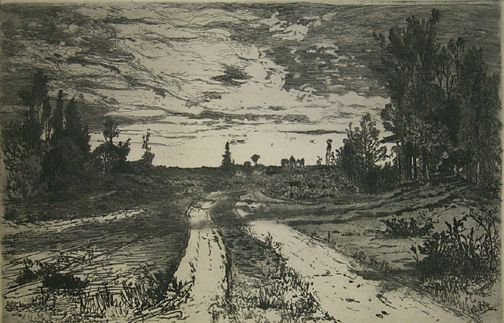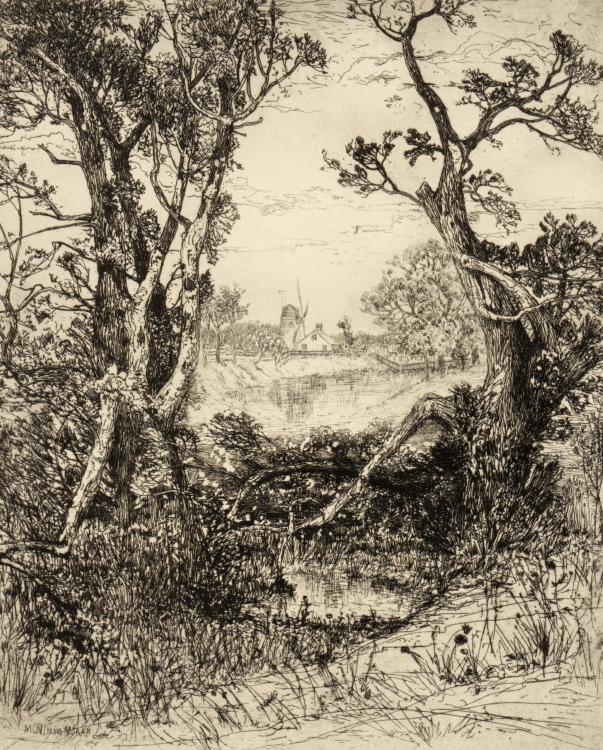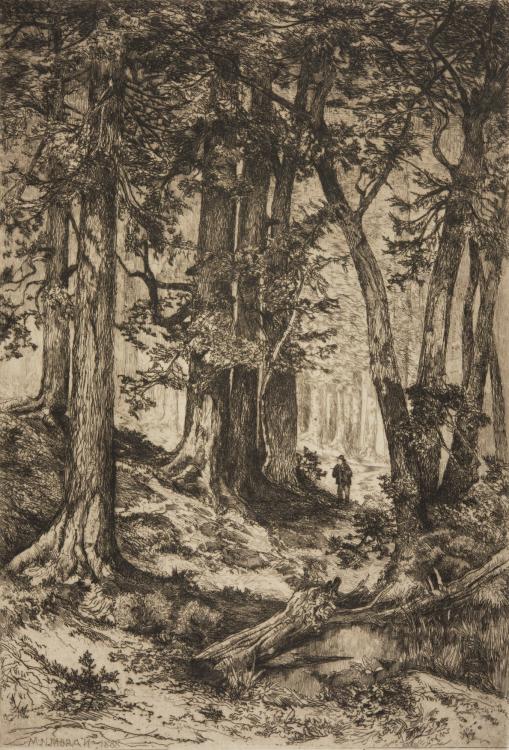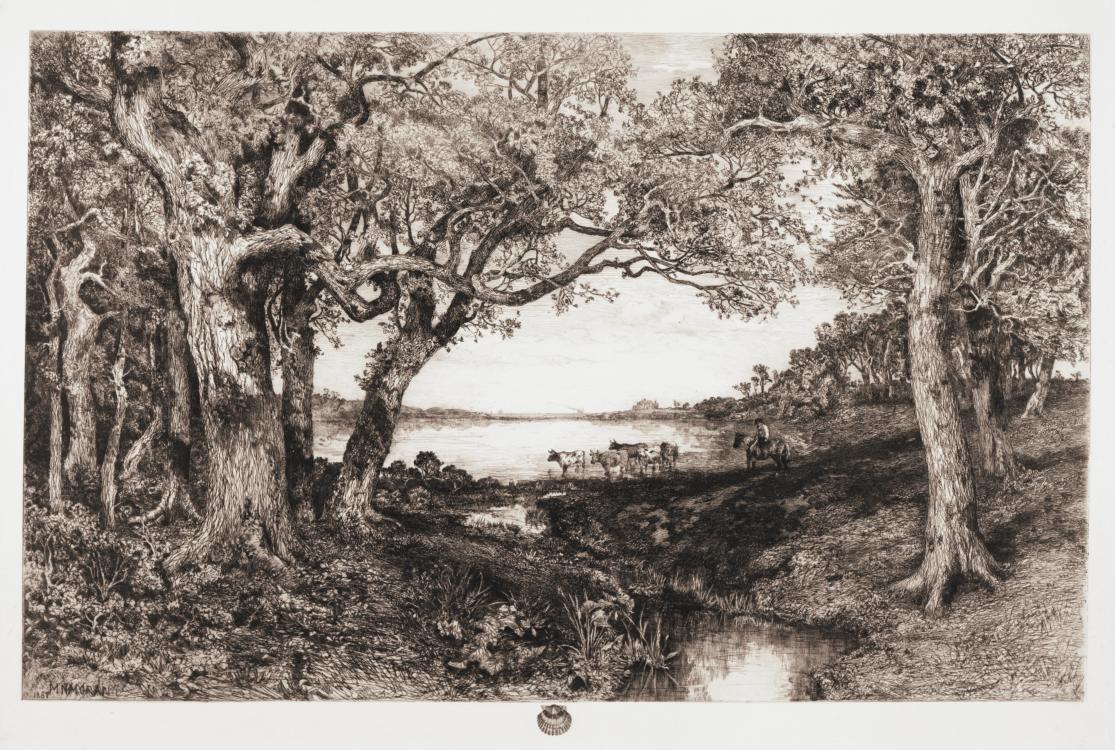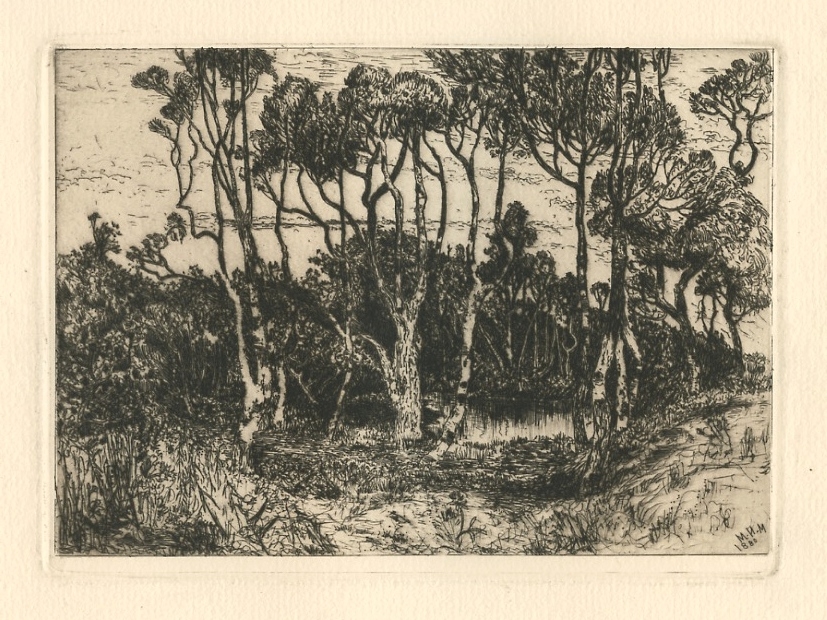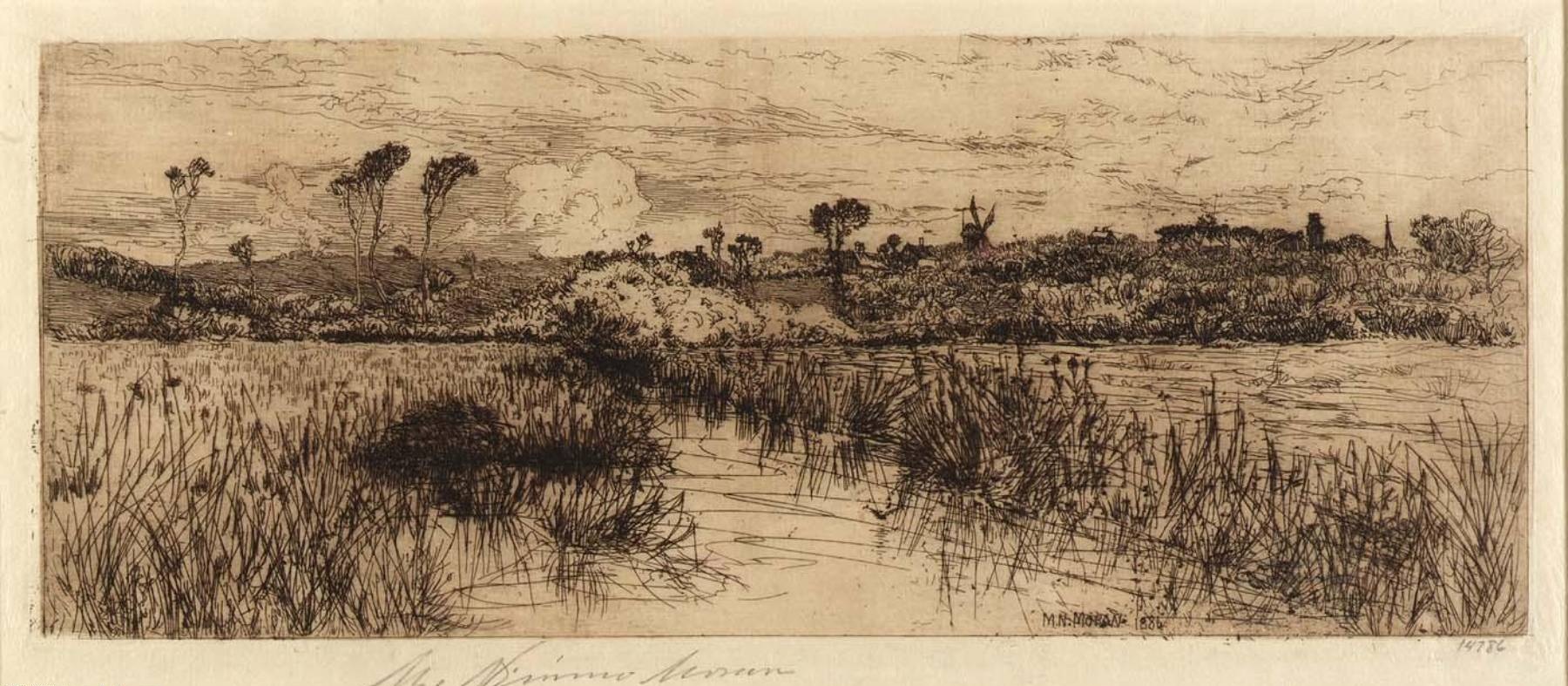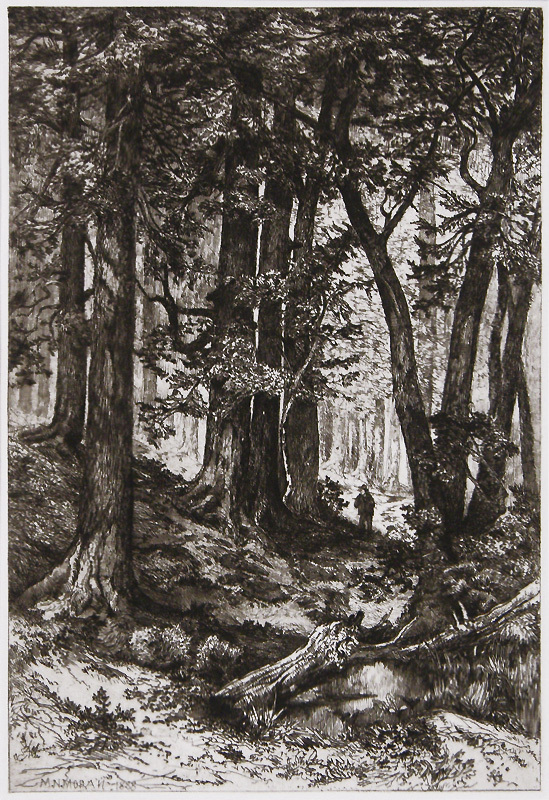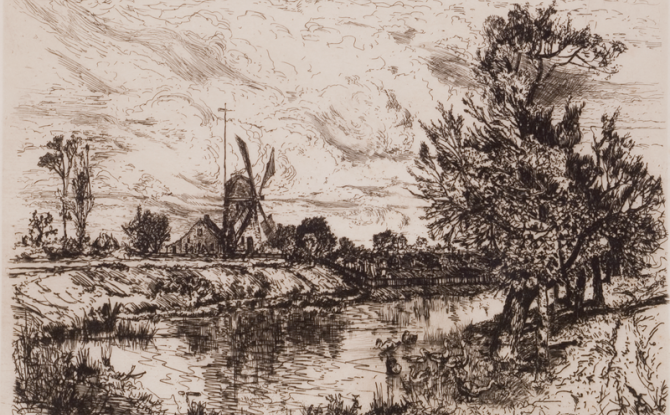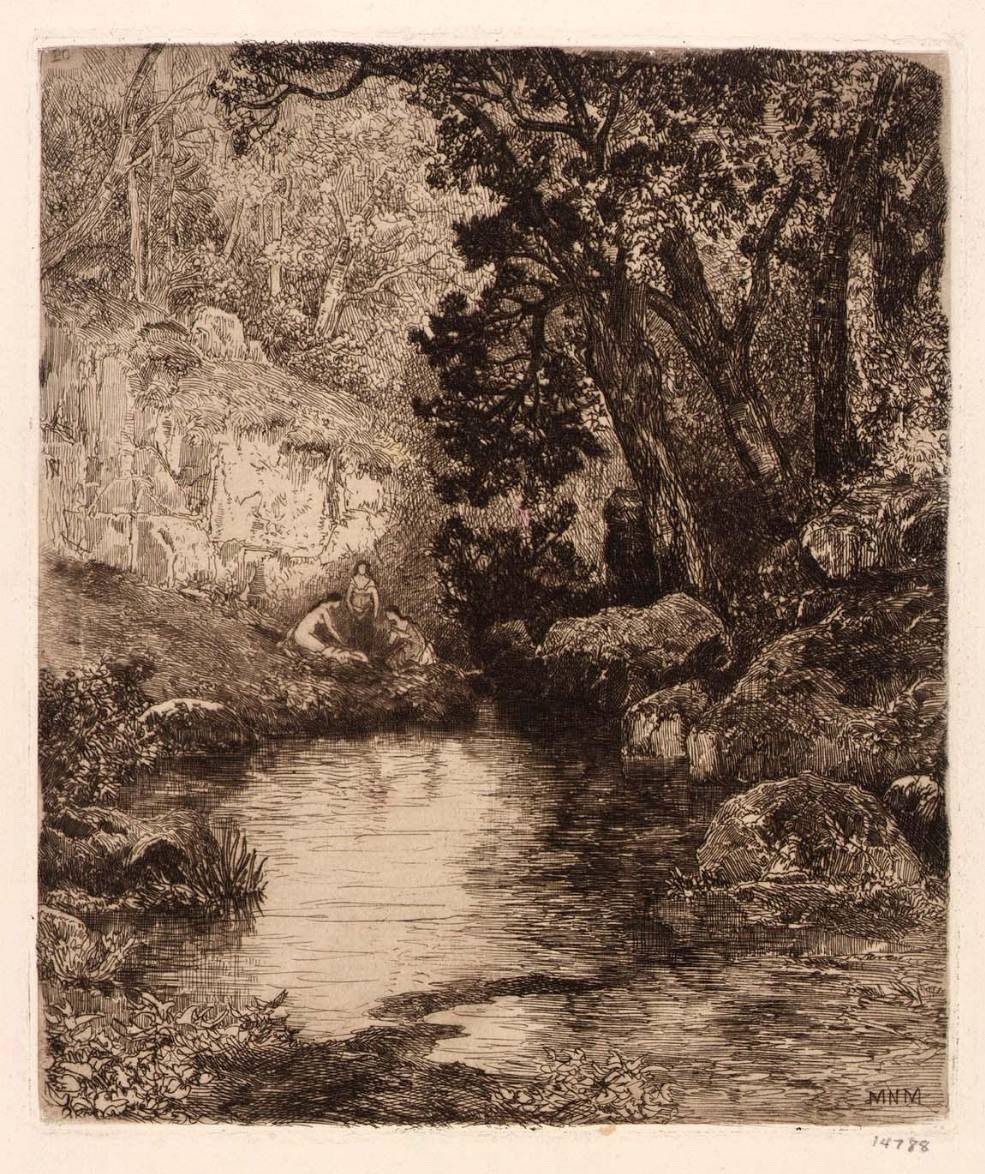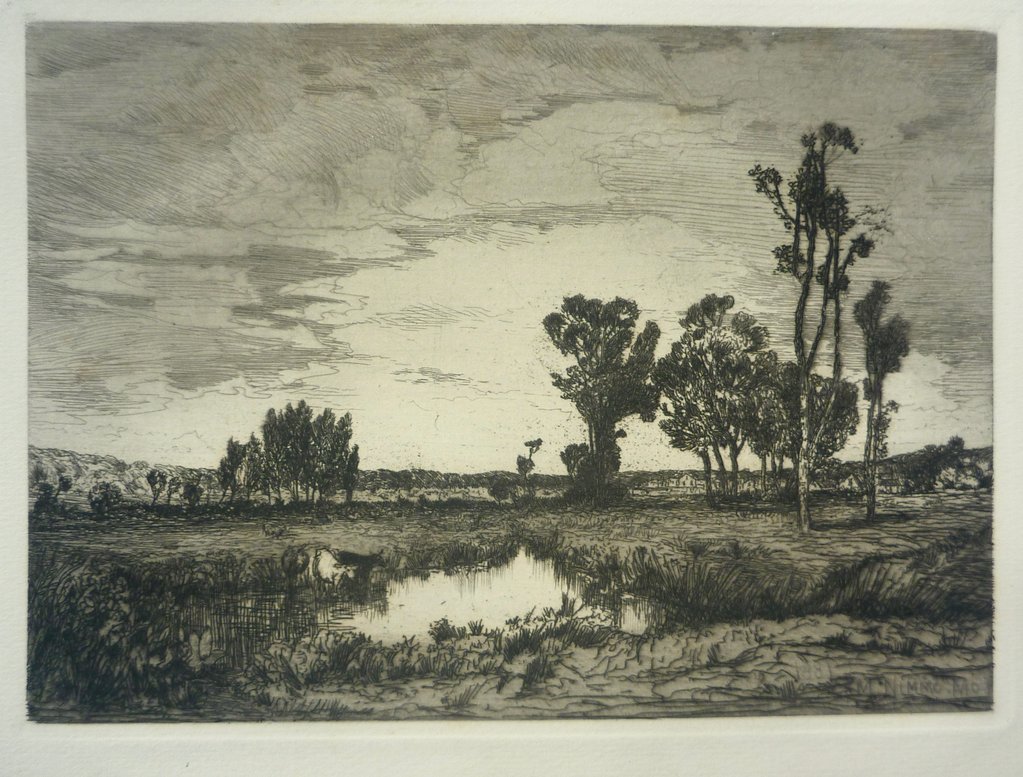Mary Nimmo Moran • American: 1842-1889
View of the East Hampton Under the Oaks, Georgica Pond C: 1887 • Etching on Paper 19.25” x 30.75”
Mary Nimmo Moran was perhaps the first woman to prove “marriage and family were not insurmountable to success.” That summer day in Pennsylvania she started along an artistic path that put her in the forefront of an etching revolution sweeping France, England and post-Civil War America.
Here was a woman conventional in every way. A Victorian lady married to the (talented) boy next door and mother of three. It was fortuitous that when she emigrated from her native Scotland, she wound up living next to the Morans, a clan filled with well-known artists, including Thomas Moran, the man she eventually married. Mary’s talent and connection to one of the most respected artistic families on the east coast made her one of the “Twelve Apostles” as the leading Moran artists were known.
Mary learned etching from her artist husband and handled homes, finances and children while he built a business selling his art, although much of it was actually done by her. He taught her to etch and she taught drawing classes to supplement family finances.
(story continues below break)





